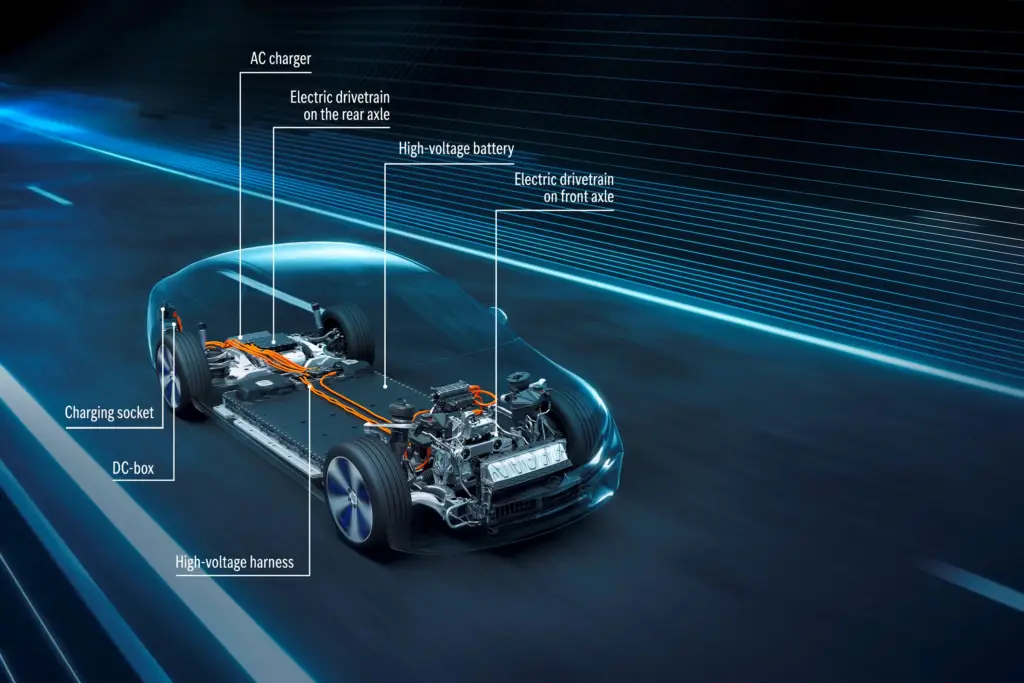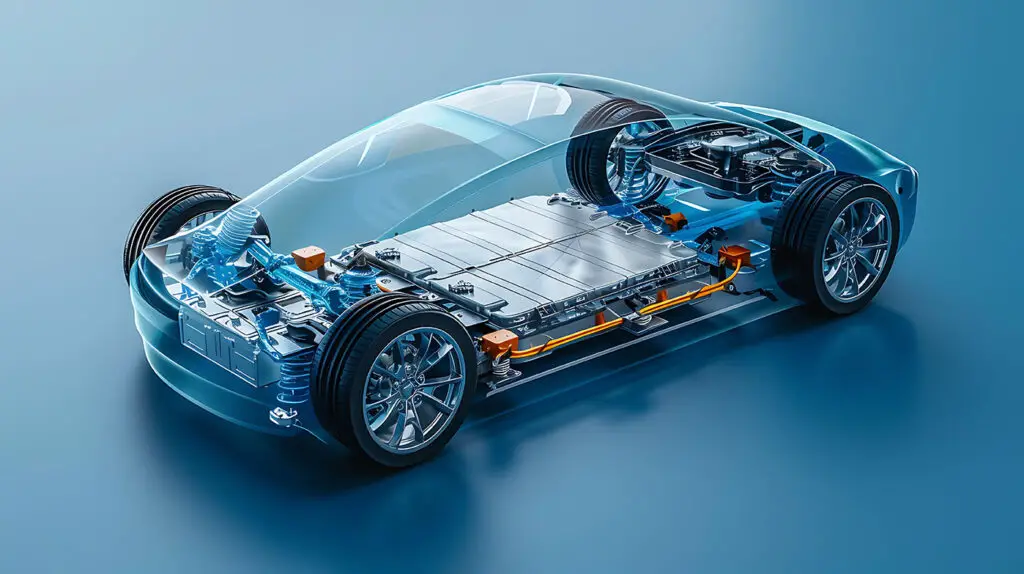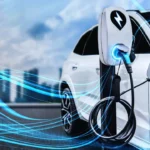Lithium-ion batteries (LIBs) have emerged as the cornerstone technology powering electric vehicles (EVs), including the high-performance electric sports cars that captivate both enthusiasts and engineers alike.
Their superior energy and power density make them an ideal choice, allowing these vehicles to achieve impressive range and blistering acceleration without a significant weight penalty.
The chemistry of lithium makes it exceptionally reactive, enabling batteries to store substantial energy in a compact form. These attributes, coupled with decreasing production costs and innovative breakthroughs, ensure that lithium-ion batteries remain the predominant energy solution in EVs for the foreseeable future.
“The evolution of lithium-ion batteries has been a catalyst for the rise of electric sports cars, transforming them from a vision of the future to an exhilarating reality.”
The Chemistry Behind Lithium-Ion Batteries in EV Sports Cars

Lithium-ion batteries used in high-performance EVs typically employ advanced chemistries like NMC (Nickel Manganese Cobalt) or NCA (Nickel Cobalt Aluminum). These are preferred over the LFP (Lithium Iron Phosphate) configurations often found in standard EVs or smaller vehicles like scooters. The choice of battery chemistry directly impacts the vehicle’s power output, weight, and safety, making it a critical factor in the design of sports cars.
The architecture of these batteries consists of:
- Positive and negative electrodes made from lithium compounds such as lithium cobalt oxide or lithium iron phosphate.
- Electrolyte solutions containing lithium salts dissolved in organic solvents, enabling efficient ion transfer.
For cutting-edge applications like Formula E racing cars, the specifics of battery technology are often proprietary, though they adhere to the stringent FIA standards for high-voltage safety.
Batteries as the Heart of Performance in Electric Sports Cars

In electric sports cars, the battery is far more than just an energy source—it is the central determinant of performance capabilities. From powering the electric motor to facilitating regenerative braking, the battery plays a pivotal role in overall efficiency and driving dynamics.
Key Performance Factors Influenced by the Battery:
- Energy Capacity: Determines the vehicle’s range on a single charge.
- Energy Density: Impacts weight, which in turn affects handling and agility.
- Power Output: Governs acceleration and top speed.
- Regenerative Braking: Reclaims kinetic energy during deceleration to extend range and improve efficiency.
Higher energy density batteries enable electric sports cars to achieve unparalleled levels of speed, responsiveness, and control, cementing their position as formidable competitors to traditional internal combustion engine vehicles.
Engineering Lithium-Ion Batteries for Extreme Conditions
Designing lithium-ion batteries for sports cars involves balancing performance with safety, particularly under the intense conditions of high-speed racing. One of the primary risks is thermal runaway, a phenomenon where the battery overheats uncontrollably, potentially leading to fires or explosions.

Advanced Safety Mechanisms in EV Sports Car Batteries:
- Protection Circuits: Actively monitor and regulate voltage, current, and temperature to prevent malfunctions.
- Porous Separators: Prevent direct contact between the anode and cathode, reducing the risk of short circuits.
- High-Voltage Safety Standards: Governed by the FIA, ensuring batteries are race-ready and secure even in extreme scenarios.
“Safety in electric sports cars is not optional—it is engineered into every cell, every connection, and every protocol.”
The FIA’s Electric Sport Vehicle (ESV) regulations further enhance safety by setting benchmarks for affordable, entry-level racing technology, allowing wider participation without compromising on safety or performance.
The Future of Lithium-Ion Batteries in EV Sports Cars
The demand for cutting-edge electric sports cars is driving relentless research into next-generation lithium-ion batteries. Scientists and engineers are exploring innovative ways to enhance energy density, lifespan, safety, and cost-effectiveness.
Promising Battery Technologies on the Horizon
| Technology | Key Features | Challenges |
|---|---|---|
| Solid-State Batteries | Utilize a solid electrolyte, offering higher energy density and enhanced safety. | Scaling production and cost management. |
| Lithium-Air Batteries | Use oxygen as a reactant, potentially achieving ultra-high energy density. | Efficiency, lifecycle limitations, and cost. |
| Cobalt-Free Chemistries | Reduce reliance on cobalt, addressing cost and ethical concerns. | Developing comparable performance metrics. |
Sustainability in Battery Production
Research highlights the value of recycled high-purity materials in manufacturing EV batteries. Batteries crafted from recycled lithium, nickel, and cobalt exhibit superior performance and longevity compared to those made with freshly mined resources.
The Transformational Impact of Battery Technology
The evolution of lithium-ion battery technology is reshaping the EV sports car industry, enabling manufacturers to push the boundaries of what these vehicles can achieve. Since the introduction of NMC batteries in the commercial market in 2011 and the subsequent debut of Formula E racing in 2014, the landscape has undergone a seismic shift.
Key Industry Impacts:
- Enhanced Consumer Appeal: Improved range and performance are making electric sports cars a mainstream choice for enthusiasts.
- Safer Racing Experiences: Advanced safety mechanisms provide peace of mind, even under high-stress conditions.
- Sustainability Goals: A shift toward recyclable materials and reduced cobalt usage is paving the way for ethical and eco-friendly production.
“Every leap in battery technology unlocks new possibilities, turning electric sports cars into the ultimate fusion of sustainability and thrill.”
Conclusion
The electric sports car industry is intrinsically linked to the advancements in lithium-ion battery technology, embracing innovation to redefine performance, efficiency, and sustainability. As researchers unveil breakthroughs like solid-state and lithium-air batteries, and manufacturers adopt eco-conscious production techniques, the future of electric sports cars looks brighter than ever.
Whether on the streets or the racetrack, these vehicles are set to deliver not just speed and agility, but a glimpse into a cleaner, electrified future.



